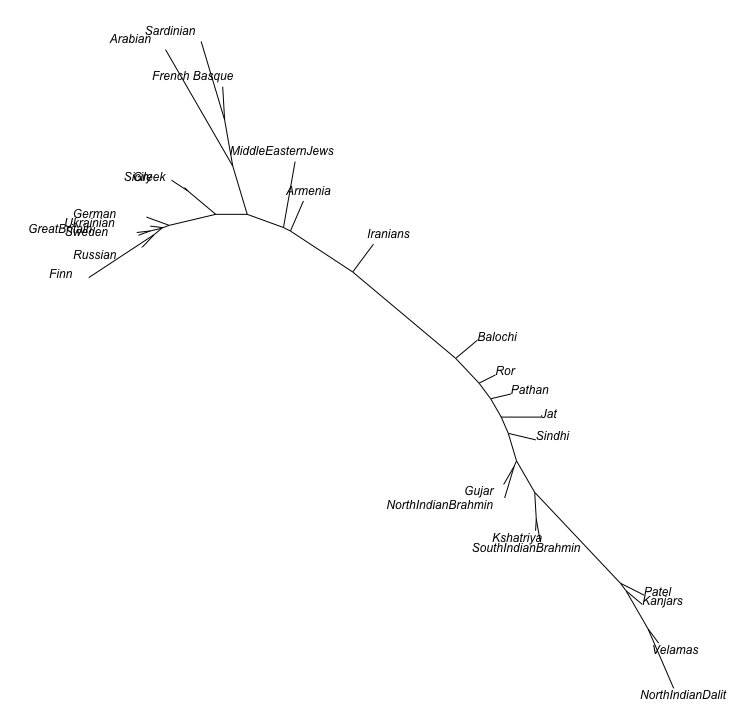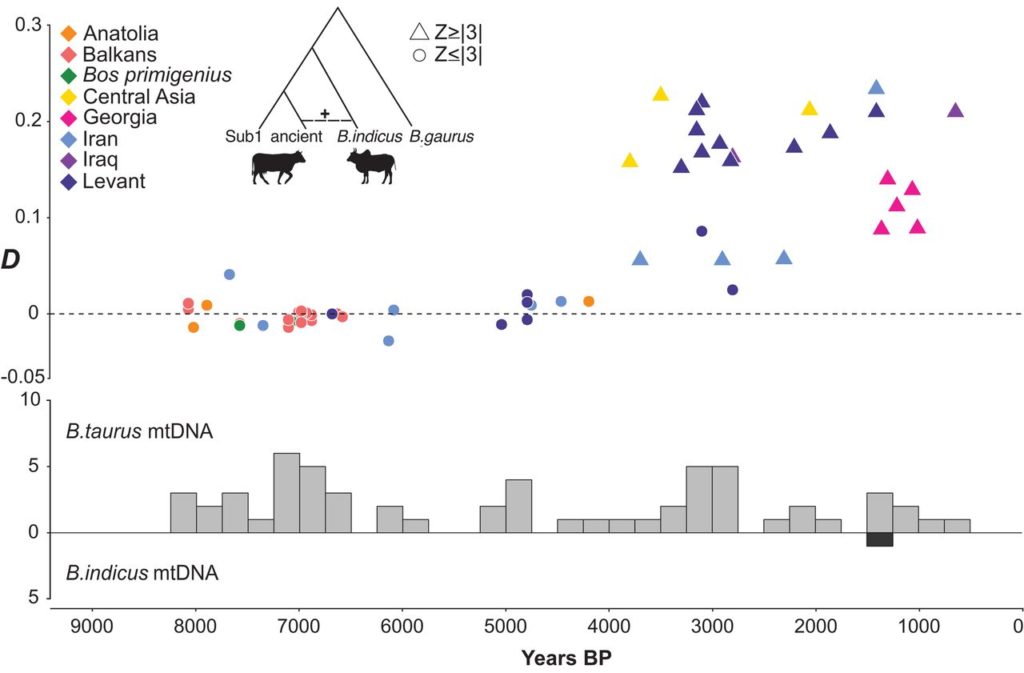
A few years ago an ancient DNA paper on cattle was published, Ancient cattle genomics, origins, and rapid turnover in the Fertile Crescent. It’s a pretty good paper with interesting results. The paper confirmed pretty strikingly that there was a punctuated and massive expansion of indicus ancestry across the Near East between 3,500 and 4,000 years ago.
The interesting aspect of cattle is that there are really two species that intermix. Using mtDNA researchers estimate indicus and taurus diverged 300,000 to 2,000,000 years ago. But the main thing you have to remember is cattle generations are about 20% as long as human generations. So 300,000 cattle years are equivalent to 1.5 million human years. And, for technical reasons (smaller effective population size) one should probably assume mtDNA underestimates the divergence.
 Ancient cattle from the Near East are all taurus. The PCA plot shows that most of the variance is on PC 1 which separates indicus and taurus (a secondary dimension is PC 2, between African and Near Eastern/European lineages). The figure at the top of this post shows that there is a massive jump in genome-wide indicus ancestry across the Near East between 2000 and 1500 BC. As the authors note this can’t be diffusion; the jump is too sudden and sweeping.
Ancient cattle from the Near East are all taurus. The PCA plot shows that most of the variance is on PC 1 which separates indicus and taurus (a secondary dimension is PC 2, between African and Near Eastern/European lineages). The figure at the top of this post shows that there is a massive jump in genome-wide indicus ancestry across the Near East between 2000 and 1500 BC. As the authors note this can’t be diffusion; the jump is too sudden and sweeping.
So what happened during this period? As noted in the paper: Bronze Age civilization almost collapsed around ~2000 BC. More concretely, after 2000 BC is when we see evidence of Indo-Europeans in the Near East. The Indo-Aryan Mittani show up in Mesopotamia in ~1600 BC. The Indo-European Hittites, the Nesa, are known from Anatolia a bit earlier.
This is also the period that small, but detectable, levels of “steppe” ancestry show up in some ancient samples.
Before this paper, I would have leaned to the position that the Mittani Indo-Aryans migrated directly from the Sintashta homeland without much contact with Indian Indo-Aryans. These data are too suggestive of a widespread zone of expanding agro-pastoralists that existed between western South Asia and the Near East between 2000 BC and 1500 BC.
One of the things we know from the barbarian period during the Fall of Rome is that barbarian groups had strong channels of information flow. For example, a group of Saxons arrived with the Lombards in Italy in the second half of the 6th century. But, through various channels, these Saxon warriors learned that their co-ethnics had established dominance in what was to become England, and there are texts which allude to the reality that they decamped and crossed the Alps, presumably on the way to what was going to be England. The point here is that there was a “Saxon international.”
Aside from the Mittani the evidence of Indo-Aryans in the Near East is tenuous, though some of the Kassites of Babylonia may have had Indo-European affinities. There is not nearly as strong a genetic imprint of steppe in the Fertile Crescent as in Northwest India. The Hittites were very different from Indo-Aryans, who seem to have the closest relationship to the Slavic language family.
The indicus breed is adapted to tropical dry climates. It seems plausible that the Indo-Aryan international facilitated the spread of this breed in the centuries before 1500 BC.
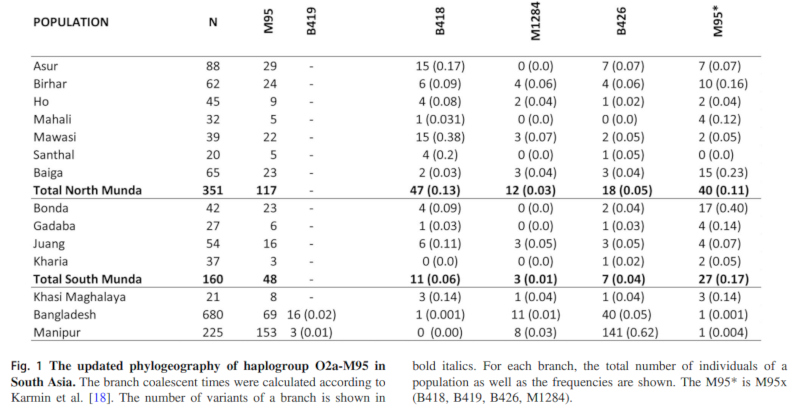


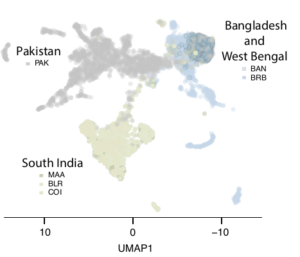
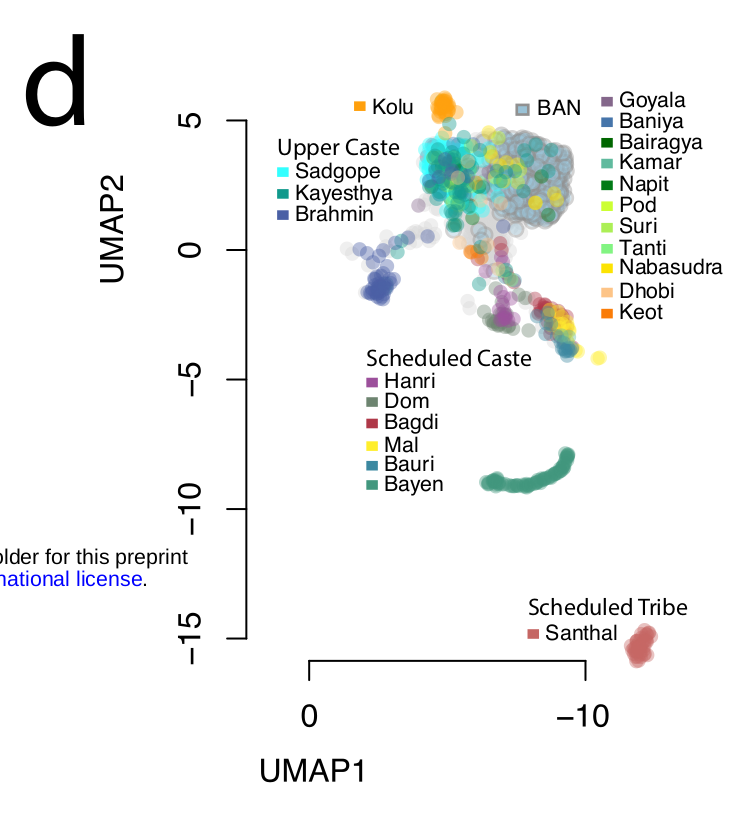

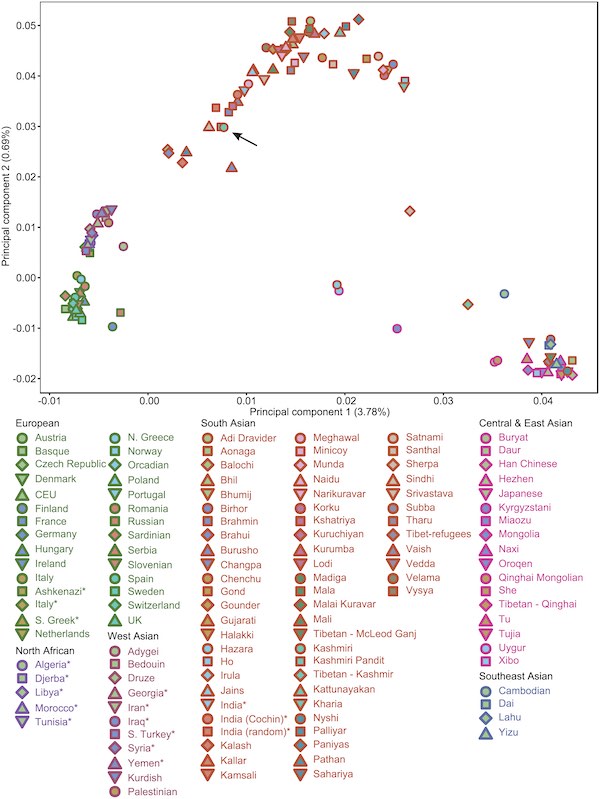

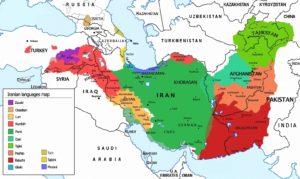
 I periodically get inquiries on various issues relating to the genetic position/relatedness of various “communities” in the Indian subcontinent. Thanks to the
I periodically get inquiries on various issues relating to the genetic position/relatedness of various “communities” in the Indian subcontinent. Thanks to the 